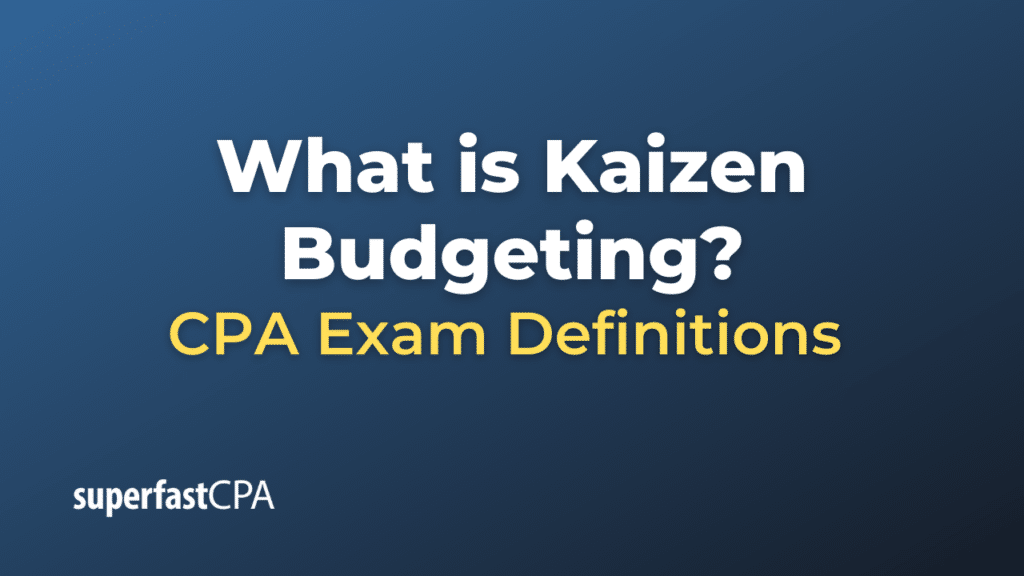Kaizen Budgeting
Kaizen budgeting is a budgeting approach that incorporates the concept of “kaizen” or continuous improvement into the budgeting process. It involves preparing the budget with an aim to continuously reduce costs through efficiency improvements.
In traditional budgeting, the current period’s budget is often based on the previous period’s budget with some increment. However, in kaizen budgeting, the emphasis is on reducing costs and improving efficiency compared to the previous period.
To achieve this, specific targets are set for cost reduction, and the budget is prepared taking these targets into account. These cost reduction targets act as a challenge for employees, promoting problem-solving and innovation in finding ways to improve efficiency and reduce costs.
The kaizen budgeting process involves all levels of employees in an organization, from top-level management to line-level workers. It promotes a culture of continuous improvement and cost consciousness among employees.
However, implementing kaizen budgeting can be challenging. It requires a strong commitment from management and employees, and it can put pressure on employees if the cost reduction targets are not set reasonably and achievable.
In summary, kaizen budgeting is a budgeting approach that aligns with the philosophy of continuous improvement. It encourages organizations to continuously find ways to improve efficiency and reduce costs.
Example of Kaizen Budgeting
Let’s consider a fictional example of a manufacturing company to illustrate how Kaizen budgeting might work.
Imagine a company, XYZ Manufacturing, that makes widgets. For the upcoming fiscal year, they decide to implement Kaizen budgeting.
Here’s how it might work:
- Setting Targets: Management sets a target to reduce production costs by 10% for the upcoming year. This goal is then broken down into smaller, specific targets for different departments. For example, the purchasing department might be tasked with reducing material costs by negotiating better deals with suppliers, while the production department might be tasked with reducing waste or improving efficiency.
- Involvement of Employees: Each department involves all its employees in brainstorming sessions to come up with ideas on how they can achieve their cost reduction targets. This could include anything from reorganizing the workspace for better efficiency, to implementing new technologies, to changing suppliers for better prices.
- Preparation of Budget: The budgets for the departments are then prepared, incorporating these cost reduction targets. The budget for the purchasing department, for example, would reflect the expected reduction in material costs.
- Review and Feedback : As the fiscal year progresses, the actual costs are compared with the budgeted costs, and the performance against the targets is regularly reviewed. Any variances are analyzed, and necessary corrective actions are taken. Employees are given feedback on their performance against their cost reduction targets, which further promotes the culture of continuous improvement.
- Continuous Improvement: The cycle repeats each year, with new targets set for further cost reductions. Over time, this process of continuous improvement leads to significant cost savings for the company.
This example illustrates the concept of Kaizen budgeting. It shows how setting cost reduction targets and involving all employees in the process can lead to continuous improvements and cost savings.












